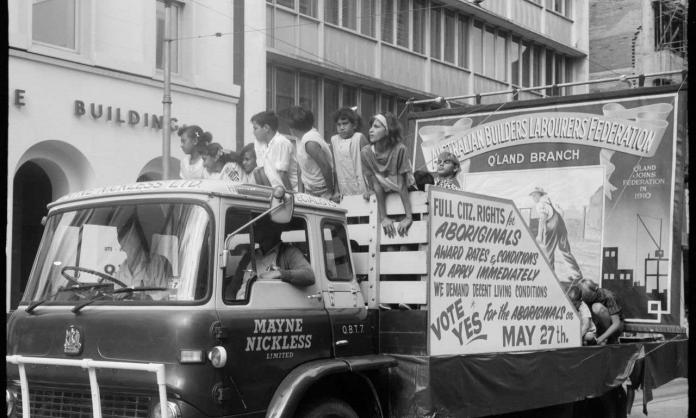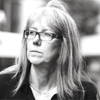One of the great insults to oppressed people is the assumption that they all think alike—from the “female point of view” to “Black politics”. The purpose is to paper over the political divisions that inevitably arise in any struggle under capitalism, in which some will wish to find a place within the system while others want to overthrow it.
There is a long history of left-right political divisions among Aboriginal people, arising out of different responses to racism and how to fight it. Those who rule the country have made use of those divisions, often by choosing to promote particular Aboriginal moderates as the voice that must be listened to.
Since the advent of Aboriginal land rights legislation, and in particular since it was watered down by the Keating ALP government into native title, mining companies and pastoral corporations that wanted the land frequently played on (and encouraged) such divisions among Aboriginal people. For example, in 2015 it came to light that billionaire Andrew Forrest’s Fortescue Metals Group helped organise and fund a meeting of Aboriginal people (the Wirlu-Murra Yindjibarndi Aboriginal Corporation) to oust the recognised Indigenous representatives of the Yindjibarndi Aboriginal Corporation and free up access to the land that his company mines.
In 2007, the Howard government began the Northern Territory Intervention (with Labor backing), sending troops to take over “prescribed areas” of the Northern Territory. Additional police and army personnel were deployed to the affected Aboriginal communities, restrictions were imposed on alcohol and over how welfare payments could be spent, townships held under the Native Title Act were compulsorily acquired through five-year leases, and the permit system that gave communities control over who came onto their land was suspended.
Some Aboriginal people fought back. Activists such as Barbara Shaw from Mount Nancy town camp in Alice Springs toured the country speaking out, and the residents of Ampilatwatja walked off their land in 2009 to protest against living conditions under the Intervention. But because they refused to act like victims, these Aboriginal people were at best invisible, at worst, insulted as dupes of “the white left”.
On the other hand, there were right-wing Aboriginal figures who were very visible, those Aboriginal activist Gary Foley called “the A-team, hand-picked, self-appointed Aboriginal spokespeople”, who supported the Intervention. Lawyer and entrepreneur Noel Pearson became the most vocal spokesperson for this conservative trend. He identified “welfare dependency” as the primary cause of Aboriginal poverty. Since well before the Intervention, he has proposed measures such as increased policing and reduced welfare services to Aboriginal communities.
Aboriginal former left-winger and now academic professor Marcia Langton also came out as an apologist for the Intervention (and the Howard government). “In 2006 and 2007, Howard government ministers and advisers made several decisions”, she wrote in a 2008 Griffith Review piece. “They would no longer stomach a policy regime whose many failings resulted in endemic poverty, alienation and disadvantage, and sickening levels of abuse of Aboriginal women and children.”
In situations such as those facing the Yindjibarndi or the Northern Territory Intervention, “listening to Aboriginal voices” gets you nowhere precisely because there are many Aboriginal voices with varying political positions. The political divides are not just between those who resist and those who clearly line up with the powers that be. Political divisions among Aboriginal activists characterised the significant struggles of the 1960s—struggles against segregation, the 1965 Freedom Ride, the 1966 Gurindji equal pay and land rights strike, the 1967 referendum to end some constitutional aspects of Aboriginal oppression, culminating in the establishment of the iconic Aboriginal Tent Embassy in 1972.
It is now well documented that communists, including Aboriginal communists, played a leading role in raising the issue of Aboriginal dispossession and resistance from the early twentieth century when no other non-Aboriginal organisations would do so. Their involvement continued in the 1960s, but in the highly polarised political atmosphere of the Cold War, the divides were even sharper. ASIO Director-General Charles Spry made this assessment of the Aboriginal movement at the time:
“Within the Federal Council for Aboriginal Advancement, a Communist Party of Australia fraction now operates and the President of the Council, Joseph Daniel McGinness, has attended a fraction meeting. On the executive and staff of the Federal Council and its thirty-one affiliated organisations I have reports that fifty-three persons are or have been members of the Communist Party of Australia. Of these, three are now known publicly to be anti-Communist, sixteen have been named publicly as Communists, eight have some public reference to being supporters of the Communist Party of Australia and the rest are known as Communists through secret and delicate reports.”
ASIO believed that the Federal Council for the Advancement of Aborigines and Torres Strait Islanders (FCAATSI), which was founded in 1958 and campaigned for Aboriginal equality in living standards, citizenship, wages and education, was under the control of a communist faction that was using Aboriginal people to further the fight for communism. In particular, ASIO was most concerned that the Communist Party was encouraging Aboriginal trade unionism to undermine wealthy pastoralists. The Freedom Ride, which exposed racism in NSW country towns, was attacked in the influential Bulletin magazine for being a front for communist influence in the Aboriginal movement.
This must have irked Aboriginal activist Charles Perkins, the individual most prominently associated with the Freedom Ride, which was organised by Student Action for Aborigines (SAFA). Perkins was an anti-communist. He and non-Indigenous activist Jim Spigelman, wary of claims of communist influence, announced that they had discouraged members of the Eureka Youth League (considered a communist front) from attending. Ann Curthoys, a participant, recollects that SAFA publicity did not convey that up to a quarter of Freedom Riders had connections to the Labour Club, the Eureka Youth League or the CPA.
Perkins regularly lashed out at communist influence in FCAATSI, Australia’s only national Aboriginal rights body, and other Aboriginal rights organisations. With the Reverend Ted Noffs, Perkins was the driving force behind the Sydney-based Foundation for Aboriginal Affairs (FAA), an organisation praised several times in the Bulletin in 1965 as being the only Aboriginal organisation without communist influence.
In early 1967, political ferment was intensifying. Perkins resigned as vice-president of FCAATSI, saying that the organisation no longer represented Aboriginal opinion, by which he meant that it was too left-wing and politicised. Others expressed concern over the dominance of white members and affiliates. Yet others, such as the young Black Power radicals, were growing impatient with FCAATSI’s moderate political style.
Perkins claimed that he was concerned about gaining greater Aboriginal representation within the Aboriginal movement. This should be taken with a grain of salt. He said that communist influence in organisations such as FCAATSI stifled this representation and that white, often communist, FCAATSI office bearers took leadership positions at the expense of Aboriginals. On the other hand, he began to work increasingly closely with the decidedly non-Aboriginal Liberal federal government.
In late 1967, Liberal MP W.C. Wentworth was asked by Prime Minister Holt for suggestions regarding new Aboriginal affairs positions within the Prime Minister’s Department. Wentworth advised Holt to set up an Aboriginal Advisory Panel, and recommended Perkins as the convener. Perkins was later appointed as a research officer, the beginning of a career in the bureaucracy that ended with him as head of the Department of Aboriginal Affairs. The Council of Aboriginal Affairs (CAA) set up by Holt in November 1967 consisted of H.C. Coombs, W.E.H. Stanner and Barrie Dexter—all white men. So much for “Aboriginal voices”.
Dexter cited several localised Aboriginal groups as being far more representative of Aboriginal viewpoints than FCAATSI, including Perkins’ FAA (earlier praised for being free of communists). The following year, Dexter reconsidered this position. After attending the 1969 FCAATSI conference, he estimated that communist influence was “very much reduced” and Aboriginal participation “increased dramatically”. Dexter also praised the growing influence of conservative views in FCAATSI, aided by grants from the Office of Aboriginal Affairs to allow more conservative delegates from Queensland, the Northern Territory and Western Australia to attend the conference, and the election of one of the OAA’s liaison officers, Phillip Roberts, an anti-communist from the Northern Territory, as vice-president.
All of this gives the lie to the idea that the state was at all interested in hearing Aboriginal voices other than those that said what the government wanted to hear.
There were organisations on the political right too. In August 1961, the Queensland State Council for the Advancement of Aboriginal and Torres Strait Islanders was split by a right-wing National Civic Council/Queensland Labor Party-aligned faction, which went on to form a pro-assimilationist anti-communist body, the One People For Australia League, which included the future first Aboriginal federal parliamentarian, Liberal Senator Neville Bonner.
There is a long and largely unsung history of Aboriginal socialists and communists such as Lucy Eatock and her children. Lucy developed her politics in Queensland during the shearers’ strike of 1891, was an anti-conscriptionist during World War One and later joined the Communist Party. Her son Noel was an activist with the early Trotskyists in the 1930s. Despite the massive pressures of the Cold War, a number of Aboriginal activists joined the Communist Party or worked closely with it in the 1950s and 1960s.
It’s popular today to talk about which voices should be heard in the public “conversations” about various political issues. Indigenous people, from the left and the right, have more of a right than most to be listened to, given the enormous suffering and oppression they have been subjected to. But the content of what is said will determine whether or not the oppression will be challenged or eventually ended. In this regard, Indigenous people are and have been like every other group—divided between those who accept or support the status quo and those who want to fight to change it.









